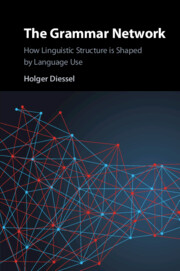References
Published online by Cambridge University Press: 12 August 2019
- Type
- Chapter
- Information
- The Grammar NetworkHow Linguistic Structure Is Shaped by Language Use, pp. 253 - 280Publisher: Cambridge University PressPrint publication year: 2019

